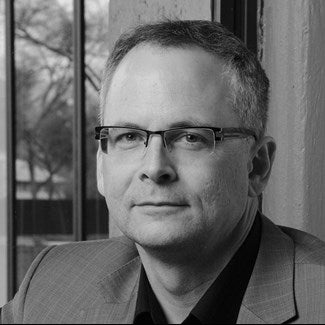Andrew Johnston
Education
Ph.D., Architecture, University of California, Berkeley
M.Arch., Architecture, University of California, Berkeley
M.S., Urban Design, Pratt Institute
B.A., Arts, Hampshire College
Biography
Andrew Johnston is a licensed architect and certified planner with a PhD in architectural history and extensive experience both in practice and in academia. He has served as a supervising architect for the Historic American Engineering Record and as an environmental planner for the California State Department of Transportation (Caltrans), working with a wide range of experts and stakeholders on the preservation and interpretation of historic cultural landscapes. In China he joined with UNESCO affiliates as one of a team of experts working on historical gardens, intermediate cities, and urban cultural landscapes and served as Consulting Architect in Heritage Preservation with the China Suzhou Institute of Architectural Design.
Andrew Johnston’s research interests focus on industrial and infrastructure heritage, cultural landscapes, critical heritage studies, and heritage and preservation in China. His book, Mercury and the Making of California: Mining, Landscape and Race, 1845-1900, is a multidisciplinary examination of the history and cultural landscapes of California's mercury-mining industry, which raises mercury to its rightful place alongside gold and silver in the development of the American West. His current research focuses on the question of heritage in contemporary China and encompasses research on heritage education in China, participation in writing national guidelines for the preservation of industrial heritage in China, and a new book project taking a comprehensive look at heritage conservation theory and methods in China today.
Andrew Johnston joined UVA in January 2016 from the department of architecture at Xi’an-Jiaotong Liverpool University (XJTLU) in Suzhou, China. He was the founding program director of both the Master of Architecture and the Interdisciplinary MSc at XJTLU, where he also led the Heritage, History and Theory Research Initiative. He has worked extensively on the promotion of multidisciplinary research sharing and interdisciplinary programs at XJTLU and will bring this work to bear on his interdisciplinary vision for the Historic Preservation Program at UVA, which he heads.
Johnston is teaching ARH 5601 Historic Preservation: Theory + Practice and ARH 5610 Field Methods II during the Spring 2016 semester and a Field Methods class in Oxford, England in Summer 2016. His teaching will be focused on Historic Preservation and Heritage, including the connections between preservation and design practice.
Mercury and the Making of California: Mining, Landscape and Race, 1845-1900.
Boulder: University Press of Colorado, 2013.
Mercury and the Making of California, Andrew Johnston's multidisciplinary examination of the history and cultural landscapes of California's mercury-mining industry, raises mercury to its rightful place alongside gold and silver in the development of the American West. Gold and silver could not be refined without mercury; therefore, its production and use were vital to securing power and wealth in the West. The first industrialized mining in California, mercury mining had its own particular organization, structure, and built environments. These were formed within the Spanish Empire, subsequently transformed by British imperial ambitions, and eventually manipulated by American bankers and investors. In California mercury mining also depended on a workforce differentiated by race and ethnicity. The landscapes of work and camp and the relations among the many groups involved in the industry-Mexicans, Chileans, Spanish, English, Irish, Cornish, American, and Chinese-form a crucial chapter in the complex history of race and ethnicity in the American West. This pioneering study explicates the mutual structuring of the built environments of the mercury-mining industry and the emergence of California's ethnic communities. Combining rich documentary sources with a close examination of the existing physical landscape, Johnston explores both the detail of everyday work and life in the mines and the larger economic and social structures in which mercury mining was enmeshed, revealing the significance of mercury mining for Western history.
- “The Hotels as Spaces of Enslaved Labor” in Louis Nelson and Maurie McInnis, eds, Slavery at the University of Virginia, University of Virginia Press, forthcoming. Co-written with Jessica Sewell. 2017.
- “Landscape and People in Cultural Resource Management: Taking Mines, Mining and Mines as an Example.” China Architectural Heritage, v. 17, January, 2016. (in Chinese)
- “CitySection: A Pedagogy for Interdisciplinary Research and Collaboration in Planning and Environmental Design,” Journal of Planning Education and Research (JPER). November, 2014.
• Bando Professori Visittori Didattica, 'Sapienza' Università di Roma
In December, 2017, named a “Bando Professori Visittori Didattica, 2017 for the Facolta di Architettura, Dipartimento di Storia Disegno Restauro dell'Architettura.
• Innovations in Practice Grant
$7000 grant to bring an internationally acclaimed practitioner to UVA for teaching and research collaboration. 2016-2017. With Dr. Jessica Sewell.
• External Fellowship/ Residency
Invited to be in residence as a visiting scholar at the East-West Center, in Honolulu, HI during a three-month period in 2016.
• External Fellowship/ Residency
In-residence at the Institute for Advanced Study, School of Social Science, in Princeton, NJ during the summer of 2015.
• Leading Talent in Internationalized Disciplines Award, 2013-18 [SIP, Special Economic Zone Government Grant, Suzhou, China]
$170,000 grant over five years. The grant is to support leading educators, scientists, and entrepreneurs working in the SIP special economic zone, Jiangsu Province. This grant funds my heritage research in China, including funding research assistants and teaching relief.

